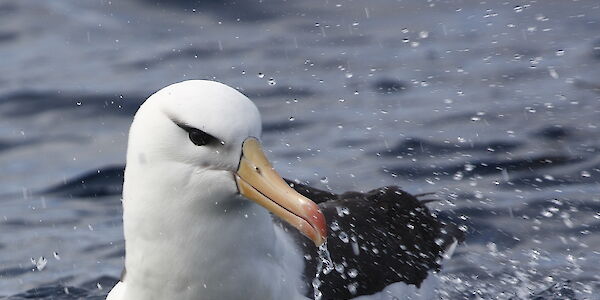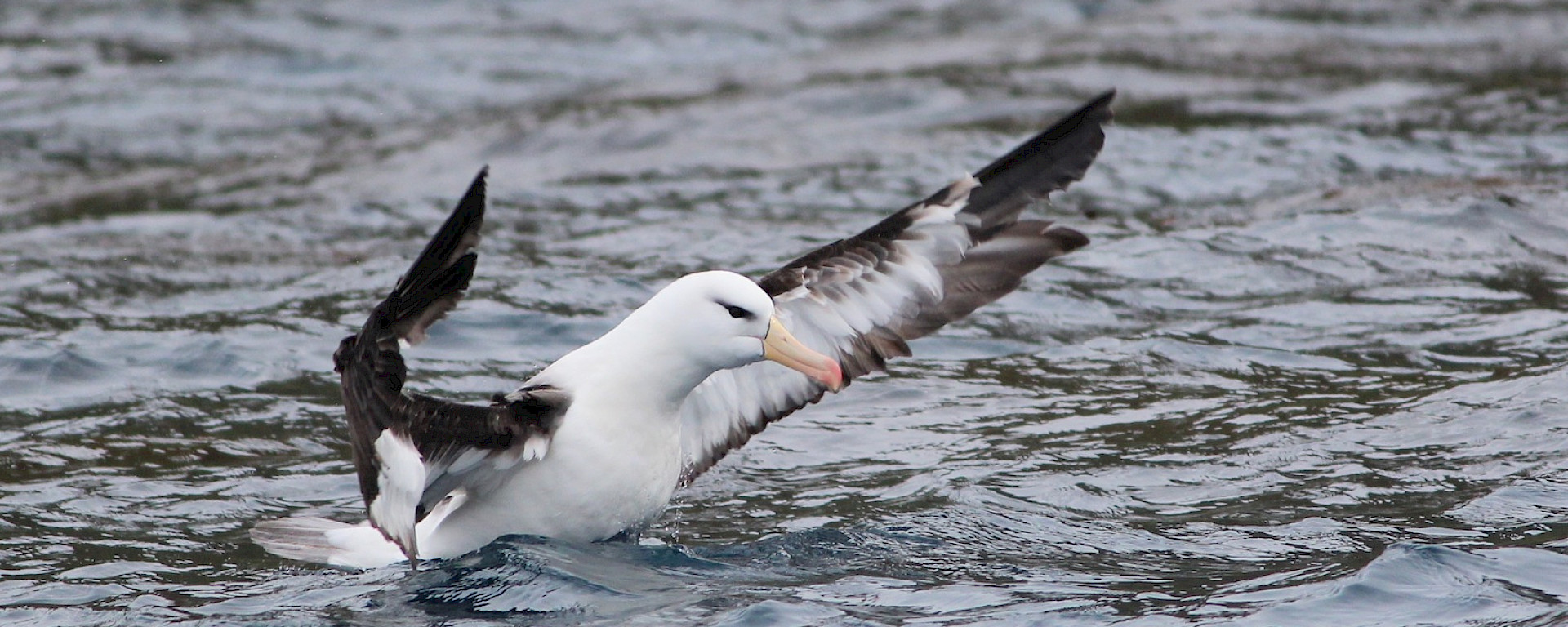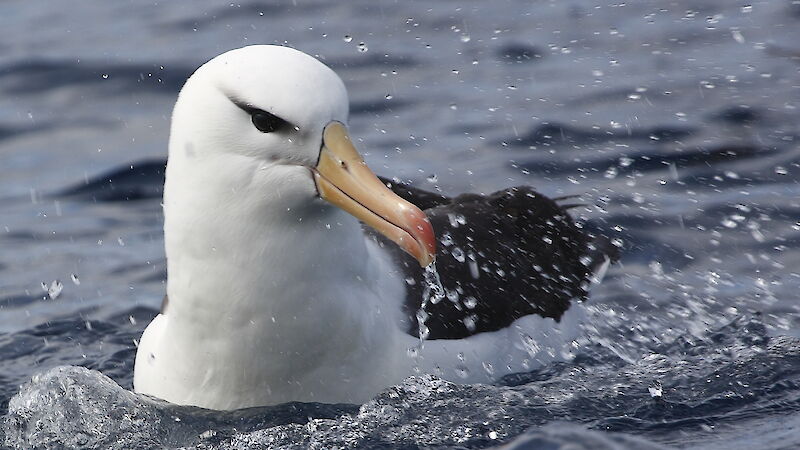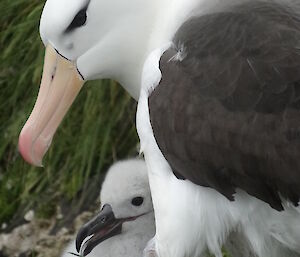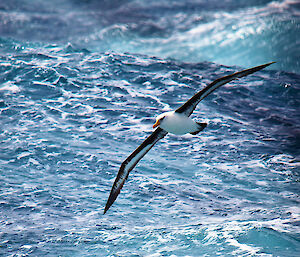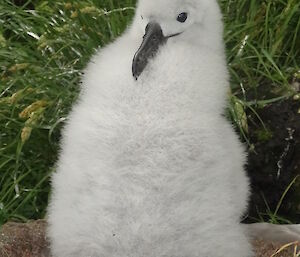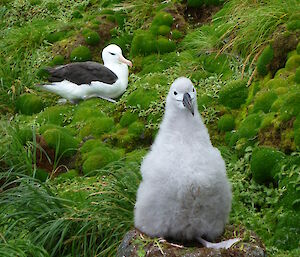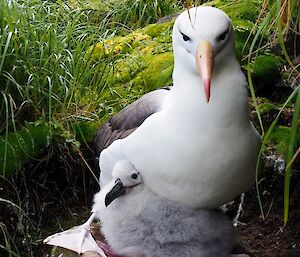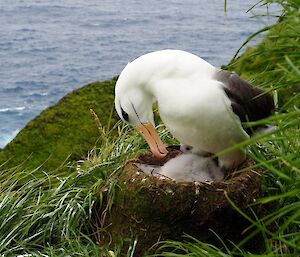Scientific name: Thalassarche melanophrys
Physical description
Black-browed albatross are mostly white with yellowish-orange webbed feet, grey highlights and a bright yellow beak. A conspicuous black eyebrow gives them their name.
Of the 24 albatross species, the black-browed albatross is one of the smallest. The adult bird is 80–95 cm in length, with a wing span of 210–250 cm and weighs 3–5 kg.
Distribution and abundance
Black-browed albatross are found over Antarctic, subantarctic and sub-tropical waters. They breed on subantarctic and Antarctic islands between 46°S and 56°S. These islands include Iles Kerguelen, Heard Island and the McDonald Islands, and Macquarie Island.
The Falkland Islands hold over 85% of the global population of black-browed albatross (estimated at 680,000 pairs). These island are the most important breeding locality in the world for this species.
Black-browed albatross are long-lived birds, living 30 years or more, and have a strong bond to their colony of birth.
Conservation status: near threatened with population trends decreasing
Off the South American coasts many birds from the Falkland Islands population are killed through interactions with longline fishing vessels.
Breeding
Black-browed albatross generally have the same breeding partner each season. They nest on terraces on top of coastal tussock-clad cliffs or steep slopes up to 300 m above sea level. The nest is a solid pillar of mud and guano with some tussock grass and seaweed incorporated, and is re-used annually.
A single egg is laid in early October. Chicks are covered with pale grey down. Both parents feed them. Fledged young birds leave the nest between mid-March and early April.
Diet and feeding
Black-browed albatross fly fairly low and take food from the sea surface or just below, occasionally plunging from heights of up to nine metres. They eat mostly krill and fish, with some cephalopods, salps and jellyfish.
Birds may travel long distances to find food — foraging trips can take several days and extend hundreds of kilometres.
